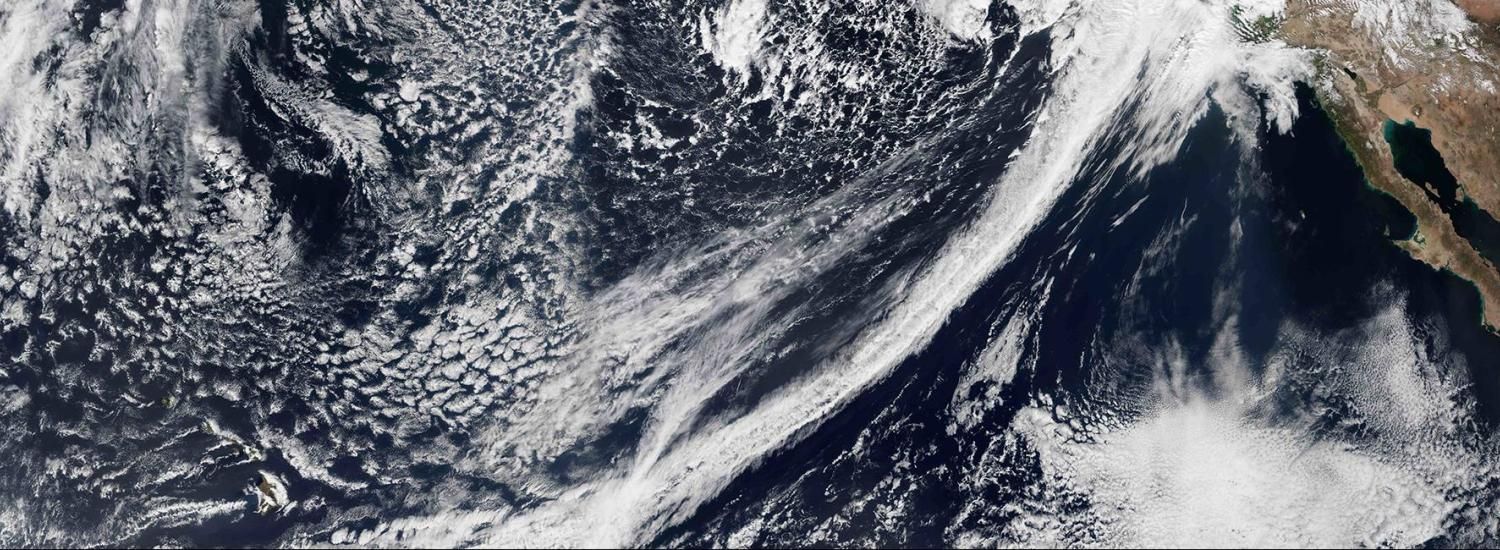Study previews how climate change may alter rain-making atmospheric rivers
Types of atmospheric rivers could change in different ways under climate change

The people, economy and ecosystems of the Pacific coast states of California, Oregon and Washington are highly dependent on cool-season atmospheric rivers for their annual water supply. These long, narrow flows of saturated air can transport enormous amounts of water vapor—roughly equivalent to the flow at the mouth of the Mississippi River. They can unload heavy precipitation on the Cascade and Sierra Nevada ranges, but their annual yield regularly swings between boom and bust.
When these atmospheric rivers, or ARs, fail to materialize, droughts often follow—especially in California, where ARs account for more than 50 percent of the total annual precipitation. Anticipating future climate-induced changes to AR patterns is therefore exceedingly important. Global models, however, do a poor job of simulating precipitation over the complex terrain of coastal and inland mountain ranges. Now, a new NOAA-led study using data generated by regional climate models suggests climate change will likely alter atmospheric rivers in ways that will make managing water more difficult.
“These high-resolution climate simulations showed something we hadn't seen before, which was decreased future precipitation amounts across many mountainous regions of the western United States,” said Mimi Hughes, a research scientist in NOAA’s Physical Sciences Laboratory (PSL) and lead author of the paper published in the journal Climate Dynamics.
Atmospheric rivers can be both beneficial—when they provide water to fill reservoirs and build snowpack—and calamitous—when they generate so much precipitation over such a short period of time that they cause flooding. Although numerous studies have investigated climate projections for atmospheric rivers, few have examined whether climate change would have a uniform impact on all events.
Downscaling climate models to better predict future impacts
For the new paper, Hughes and colleagues from PSL, CIRES and NCAR analyzed data from regional climate models simulating weather conditions over most of North America for the period 1950 to 2100. They specifically looked at the end-of-21st-century changes in integrated water vapor transport (IVT) events along the western coast of the United States in three of the highest-resolution regional climate models. IVT is a measure of how much water vapor is moving through the air and was used as an indicator of atmospheric rivers making landfall.
Rather than evaluate the simulated impact on all model-generated atmospheric rivers, researchers partitioned the events into two categories—modest and extreme—and then looked for different outcomes.
Hughes said their findings are consistent with previous global climate model projections of increased lower-elevation precipitation across much of the western United States. However, differences did emerge. The simulations projected moderate events to be less frequent and deliver less high-elevation precipitation, a finding that tracks another recent NOAA and CIRES study.
A drier future for California’s most important “reservoir”?
The Sierra Nevada mountains are a key component of California's current water system. Snowpack in the high Sierras acts like a giant reservoir, releasing clean water during the melt season. Sixty percent of California’s water supply originates in the high Sierras, and more than 75 percent of Californians drink water generated by Sierra snows.
Notably, more than half of the model runs in the new study showed that Sierra snowpack would receive decreased precipitation by 2100, while the arid Great Basin might benefit from a moisture boost.
The research suggests these two types of atmospheric rivers could change in different ways under climate change, with the beneficial kind becoming less frequent, Hughes said.
“While we did not specifically examine seasonal precipitation outcomes like droughts, it’s fair to conclude that if these projections bear out, California’s strained water resources may become even more challenging to manage,” she said.
This story was written by NOAA Communications.